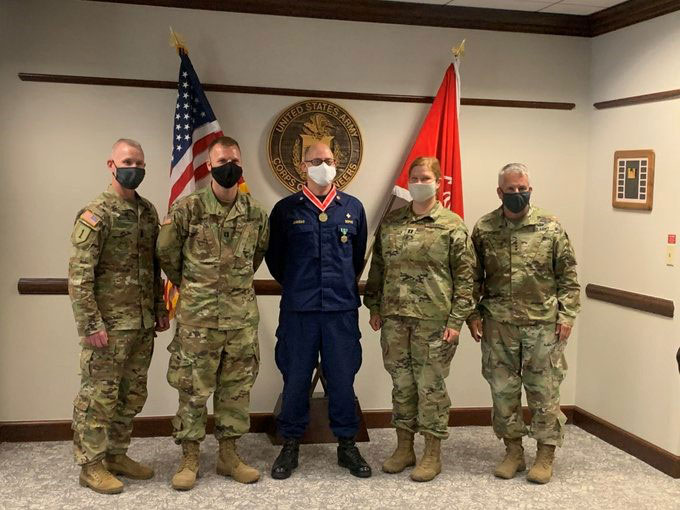USAMRDC Answers the Call for COVID-19

On February 11, when the World Health Organization (WHO) announced a formal name for the novel coronavirus, there were fewer than 1,200 fatalities worldwide – the vast majority of which were concentrated in China, the country of the outbreak's origin.
By the middle of March, however, several cities in the U.S. became hot spots for the fast-moving pandemic for a variety of reasons; including, notably, after the return of American citizens from global travel to places such as Asia, Europe, and South America.
"I never imagined that COVID-19 would spread so quickly and become the most devastating health crisis in more than 100 years," said Captain Bryan Haines, a member of the U.S. Army Reserve and current staffer with the U.S. Army Medical Research and Development Command's (USAMRDC) Combat Casualty Care Research Program (CCCRP). Haines was called to duty to help fight the pandemic just a few months ago.
By trade, Haines is a neurotrauma research portfolio manager at the CCCRP who earned a doctorate in cell and molecular biology from the University of Hawaii. As a reservist, he brings his scientific background to the forefront by providing much need safety recommendations.
For instance, back in March – on St. Patrick's Day, no less – Haines received a call from his reserve unit early in the morning and was told to prepare for travel in short order as New York became the epicenter of the pandemic.
"My first task was to draft cleaning and disinfecting guidance for essential work spaces that were exposed to sick individuals suspected of contracting COVID-19," said Haines.
Haines has since been working with the U.S. Army Corps of Engineers (USACE), with his immediate group being tasked with protecting and influencing health care policy for the hundreds of alternative care facilities (ACFs) being constructed and staffed throughout the country.
The USACE is currently executing eight mission assignments in collaboration with the Federal Emergency Management Agency (FEMA), and has dispersed more than 1,110 soldiers to build ACFs across the county.
When Captain Haines joined the U.S. Army Reserve, he knew there would be opportunities to travel, but he didn't anticipate being such a frequent-flyer.
"I've visited Detroit, Chicago, Miami, Loveland, and Denver," said Haines in recalling his aerial duties – efforts that once included a flight aboard a Black Hawk helicopter high above the aforementioned Mile High City.
Haines, who was previously tasked with the U.S. Army's 18th Field Hospital, says regardless of the mission, the hours, or the location, he has deep respect and admiration for the many doctors, nurses, and support staff working long hours on the front lines; all of whom often expose themselves to high risks in search of executing a common goal. According to new data from the Centers for Disease Control and Prevention (CDC) more than 60,000 health care workers have been infected by COVID-19, with nearly 300 deaths resulting from those cases.
Despite the time away from his family, Haines says his tour of duty has given him an amazing perspective through witnessing the resourcefulness and resiliency of Americans, many of whom are experiencing financial hardships and coping with other challenging circumstances.
Haines says he is "one of the lucky ones," who is able to return home occasionally to Maryland to visit his family.
"I'm confident that the research being conducted by the best and brightest scientists worldwide will produce a vaccine that helps us turn the corner on COVID-19," said Haines. "Until then, we will all just have to be Army Strong!"














